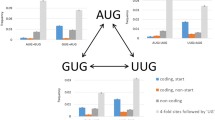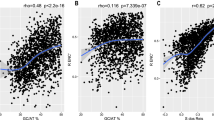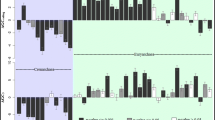Abstract
Since the advent of rapid techniques for sequencing DNA in the mid 70’s, it became clear that all codons coding for the same amino acid are not used according to neutral expectations. In the last 30 years, several theories were proposed for explaining this fact. However, the most important concepts were the result of analyses carried out in Bacteria, and unicellular and multicellular eukaryotes like mammals (in other words, in two of the three Domains of life). In this communication, we study the main forces that shape codon usage in Archaeae under an evolutionary perspective. This is important because, as known, the orthologous genes related with the informational system in this Domain (replication, transcription and translation) are more similar to eukaryotes than to Bacteria. Our results show that the effect of selection acting at the level of translation is present in the Domain but mainly restricted to only a phylum (Euryarchaeota) and therefore is not as extended as in Bacteria. Besides, we describe the phylogenetic distribution of translational optimal codons and estimate the effect of selection acting at the level of accuracy. Finally, we discuss these results under some peculiarities that characterize this Domain.


Similar content being viewed by others
References
Akashi H (1994) Synonymous codon usage in Drosophila melanogaster: natural selection and translational accuracy. Genetics 136:927–935
Bolhuis H, Poele EM, Rodriguez-Valera F (2004) Isolation and cultivation of Walsby’s square archaeon. Environ Microbiol 6:1287–1291
Bulmer M (1991) The selection-mutation-drift theory of synonymous codon usage. Genetics 129:897–907
Cannarozzi G, Schraudolph NN, Faty M, von Rohr P, Friberg MT, Roth AC, Gonnet P, Gonnet G, Barral Y (2010) A role for codon order in translation dynamics. Cell 141:355–367
Carlini DB, Stephan W (2003) In vivo introduction of unpreferred synonymous codons into the Drosophila Adh gene results in reduced levels of ADH protein. Genetics 163:239–243
Curran JF, Yarus M (1989) Rates of aminoacyl-tRNA selection at 29 sense codons in vivo. J Mol Biol 209:65–77
dos Reis M, Savva R, Wernisch L (2004) Solving the riddle of codon usage preferences: a test for translational selection. Nucleic Acids Res 32:5036–5044
Emery LR, Sharp PM (2011) Impact of translational selection on codon usage bias in the archaeon Methanococcus maripaludis. Biol Lett 7:131–135
Gingold H, Pilpel Y (2011) Determinants of translation efficiency and accuracy. Mol Syst Biol 7:481
Gouy M, Gautier C (1982) Codon usage in bacteria: correlation with gene expressivity. Nucleic Acids Res 10:7055–7074
Grantham R, Gautier C, Gouy M, Mercier R, Pave A (1980) Codon catalog usage and the genome hypothesis. Nucleic Acids Res 8:r49–r62
Ikemura T (1981) Correlation between the abundance of Escherichia coli transfer RNAs and the occurrence of the respective codons in its protein genes: a proposal for a synonymous codon choice that is optimal for the E. coli translational system. J Mol Biol 151:389–409
Ikemura T (1982) Correlation between the abundance of yeast transfer RNAs and the occurrence of the respective codons in protein genes. Differences in synonymous codon choice patterns of yeast and Escherichia coli with reference to the abundance of isoaccepting transfer RNAs. J Mol Biol 158:573–597
Iriarte A, Baraibar JD, Romero H, Musto H (2011) Selected codon usage bias in members of the class Mollicutes. Gene 473:110–118
Iriarte A, Sanguinetti M, Fernandez-Calero T, Naya H, Ramon A, Musto H (2012) Translational selection on codon usage in the genus Aspergillus. Gene 506:98–105
Iriarte A, Baraibar JD, Romero H, Castro-Sowinski S, Musto H (2013) Evolution of optimal codon choices in the family Enterobacteriaceae. Microbiology 159:555–564
King JL, Jukes TH (1969) Non-Darwinian evolution. Science 164:788–798
Moran NA, Wernegreen JJ (2000) Lifestyle evolution in symbiotic bacteria: insights from genomics. Trends Ecol Evol 15:321–326
Musto H, Romero H, Zavala A (2003) Translational selection is operative for synonymous codon usage in Clostridium perfringens and Clostridium acetobutylicum. Microbiology 149:855–863
Novoa EM, Pavon-Eternod M, Pan T, Ribas de Pouplana L (2012) A role for tRNA modifications in genome structure and codon usage. Cell 149:202–213
Plotkin JB, Kudla G (2011) Synonymous but not the same: the causes and consequences of codon bias. Nat Rev Genet 12:32–42
Precup J, Parker J (1987) Missense misreading of asparagine codons as a function of codon identity and context. J Biol Chem 262:11351–11355
Rivera MC, Jain R, Moore JE, Lake JA (1998) Genomic evidence for two functionally distinct gene classes. Proc Natl Acad Sci USA 95:6239–6244
Robertson CE, Harris JK, Spear JR, Pace NR (2005) Phylogenetic diversity and ecology of environmental Archaea. Curr Opin Microbiol 8:638–642
Robinson JL, Pyzyna B, Atrasz RG, Henderson CA, Morrill KL, Burd AM, Desoucy E, Fogleman RE 3rd, Naylor JB, Steele SM, Elliott DR, Leyva KJ, Shand RF (2005) Growth kinetics of extremely halophilic archaea (family halobacteriaceae) as revealed by arrhenius plots. J Bacteriol 187:923–929
Rocha EP (2008) The organization of the bacterial genome. Annu Rev Genet 42:211–233
Sharp PM, Li WH (1987a) The Codon Adaptation Index–a measure of directional synonymous codon usage bias, and its potential applications. Nucleic Acids Res 15:1281–1295
Sharp PM, Li WH (1987b) The rate of synonymous substitution in enterobacterial genes is inversely related to codon usage bias. Mol Biol Evol 4:222–230
Sharp PM, Cowe E, Higgins DG, Shields DC, Wolfe KH, Wright F (1988) Codon usage patterns in Escherichia coli, Bacillus subtilis, Saccharomyces cerevisiae, Schizosaccharomyces pombe, Drosophila melanogaster and Homo sapiens; a review of the considerable within-species diversity. Nucleic Acids Res 16:8207–8211
Sharp PM, Bailes E, Grocock RJ, Peden JF, Sockett RE (2005) Variation in the strength of selected codon usage bias among bacteria. Nucleic Acids Res 33:1141–1153
Sharp PM, Emery LR, Zeng K (2010) Forces that influence the evolution of codon bias. Philos Trans R Soc Lond B Biol Sci 365:1203–1212
Sorensen MA, Kurland CG, Pedersen S (1989) Codon usage determines translation rate in Escherichia coli. J Mol Biol 207:365–377
Supek F, Skunca N, Repar J, Vlahovicek K, Smuc T (2010) Translational selection is ubiquitous in prokaryotes. PLoS Genet 6:e1001004
Torarinsson E, Klenk HP, Garrett RA (2005) Divergent transcriptional and translational signals in Archaea. Environ Microbiol 7:47–54
Vieira-Silva S, Rocha EP (2010) The systemic imprint of growth and its uses in ecological (meta)genomics. PLoS Genet 6:e1000808
Author information
Authors and Affiliations
Corresponding author
Electronic supplementary material
Below is the link to the electronic supplementary material.
Rights and permissions
About this article
Cite this article
Iriarte, A., Jara, E., Leytón, L. et al. General Trends in Selectively Driven Codon Usage Biases in the Domain Archaea. J Mol Evol 79, 105–110 (2014). https://doi.org/10.1007/s00239-014-9647-7
Received:
Accepted:
Published:
Issue Date:
DOI: https://doi.org/10.1007/s00239-014-9647-7




